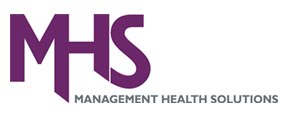Modern Healthcare's inaugural Healthcare's Hottest
recognition program honors the fastest growing companies and organizations in
the industry as measured by revenue growth. Forty companies were named to the
2012 list (below). On July 23, Modern Healthcare announced the names of the 40
companies in alphabetical order. Modern Healthcare will announce the ranked
order of the 40 companies in September.
| Company name | City | State | Website | Sector | Ownership |
| Adventist Health Partners | Bolingbrook | IL | www.AdventistHealthPartners.com | Physician group practices | Private, Non-profit |
| Allscripts Healthcare Solutions, Inc. | Chicago | IL | www.allscripts.com | Suppliers | Publicly traded (for-profit) |
| Amerigroup Corporation | Virginia Beach | VA | www.amerigroup.com | Payers/insurers | Publicly traded (for-profit) |
| Beacon Partners | Weymouth | MA | www.beaconpartners.com | Suppliers | Privately held (for-profit) |
| Best Doctors, Inc. | Boston | MA | www.bestdoctors.com | Payers/insurers | Privately held (for-profit) |
| BioRx | Cincinnati | OH | www.biorx.com | Suppliers | Privately held (for-profit) |
| BravoSolution | Chicago | IL | www.BravoSolution.com | Suppliers | Privately held (for-profit) |
| Capella Healthcare | Franklin | TN | www.capellahealth.com | Hospital/hospital system | Privately held (for-profit) |
| Centerre Healthcare Corporation | Brentwood | TN | www.centerrehc.com | Hospital/hospital system | Privately held (for-profit) |
| Chindex International, Inc. | Bethesda | MD | www.chindex.com | Hospital/hospital system | Publicly traded (for-profit) |
| Compass Health | Crowley | LA | www.compasshealthcare.com | Hospital/hospital system | Privately held (for-profit) |
| Cumberland Consulting Group | Franklin | TN | www.cumberlandcg.com | Suppliers | Privately held (for-profit) |
| Cumberland Pharmaceuticals | Nashville | TN | www.cumberlandpharma.com | Suppliers | Publicly traded (for-profit) |
| Edifecs, Inc. | Bellevue | WA | www.edifecs.com | Suppliers | Privately held (for-profit) |
| Emergent Medical Associates | Manhattan Beach | CA | www.ema.us | Physician group practices | Privately held (for-profit) |
| ESD | Toledo | OH | www.esdontheweb.com | Suppliers | Privately held (for-profit) |
| Florida Cancer Specialists and Research Institute | Ft Myers | FL | www.flcancer.com | Physician group practices | Privately held (for-profit) |
| GlobalMed | Scottsdale | AZ | www.globalmed.com | Suppliers | Privately held (for-profit) |
| Health Systems International | Indianapolis | IN | www.us-hsi.com | Suppliers | Privately held (for-profit) |
| Healthfirst | New York | NY | www.healthfirst.org | Payers/insurers | Private, Non-profit |
| Hospital Housekeeping Systems | Austin | TX | www.hhs1.com | Suppliers | Privately held (for-profit) |
| IASIS Healthcare | Franklin | TN | www.iasishealthcare.com | Hospital/hospital system | Privately held (for-profit) |
| Innovative Services Inc. | Green Bay | WI | www.myinnovativeservices.com | Suppliers | Private, Non-profit |
| Masimo | Irvine | CA | www.masimo.com | Suppliers | Publicly traded (for-profit) |
| MedRisk, Inc. | King of Prussia | PA | www.medrisknet.com | Payers/insurers | Privately held (for-profit) |
| MedSynergies | Irving | TX | www.medsynergies.com | Suppliers | Privately held (for-profit) |
| Mercy Health | Blue Ash | OH | www.e-mercy.com | Hospital/hospital system | Private, Non-profit |
| Mercy Health Physicians | Cincinnati | OH | www.e-mercy.com | Physician group practices | Private, Non-profit |
| Merge Healthcare | Chicago | IL | www.merge.com | Suppliers | Publicly traded (for-profit) |
| Methodist Health System | Dallas | TX | www.methodisthealthsystem.org | Hospital/hospital system | Private, Non-profit |
| Navicure | Duluth | GA | www.navicure.com | Suppliers | Privately held (for-profit) |
| NorthStar Anesthesia | Arlington | TX | www.northstaranesthesia.com | Physician group practices | Privately held (for-profit) |
| Physicians Pharmacy Alliance, Inc | Cary | NC | www.physicianspharmacyalliance.com | Suppliers | Privately held (for-profit) |
| Pikeville Medical Center | Pikeville | KY | www.pikevillehospital.org | Hospital/hospital system | Private, Non-profit |
| Somnia, Inc. | New Rochelle | NY | www.somniainc.com | Physician group practices | Privately held (for-profit) |
| St. Luke's Jones Regional Medical Center | Anamosa | IA | www.jonesregional.org | Hospital/hospital system | Private, Non-profit |
| Summit Medical Group | Berkeley Heights | NJ | www.summitmedicalgroup.com | Physician group practices | Privately held (for-profit) |
| Sysmex America, Inc. | Mundelein | IL | www.sysmex.com/us | Suppliers | Publicly traded (for-profit) |
| The Advisory Board Company | Washington | DC | www.advisory.com | Suppliers | Publicly traded (for-profit) |
| The Villages Health System (Villages Tri-County Medical Center, Inc.) | The Villages | FL | www.cfhalliance.org | Hospital/hospital system | Private, Non-profit |
All submitted financial documentation was tabulated and
analyzed by Modern Healthcare. A sample of Modern Healthcare's tabulations were
independently assessed by the accounting and management consulting firm of
Deloitte & Touche, a subsidiary of Deloitte LLP, which provides audit, tax,
consulting, and financial advisory services to companies of all sizes including
a practice dedicated to middle-market firms.
Source: modernhealthcare
